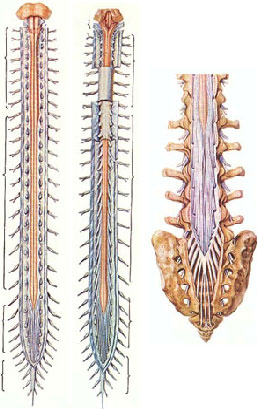一项研究显示,来自成年小鼠细胞的经过安全性筛选的干细胞恢复了脊髓损伤小鼠的运动功能。
Hideyuki Okano及其同事使用此前开发的技术培育出了诱导多能(iPS)干细胞,它们可以转变成多种类型的细胞。此前由同一组科学家进行的研究显示这些细胞不那么安全,或者在移植到小鼠体内后更容易形成肿瘤。在这项研究中,科学家首先证明了在皮氏培养皿中,他们可以鼓励这些iPS细胞分化成各种类型的神经细胞,包括神经元、星形细胞和寡突细胞,形成了一个神经球。当这组作者把来自“安全的”iPS细胞的神经球移植到脊髓损伤的小鼠体内之后,这些小鼠恢复了一些运动功能并且没有出现肿瘤。当这组科学家移植来自“不安全的”iPS细胞的神经球的时候,这些小鼠最初表现出了运动功能的改善,然而,最终出现了肿瘤,而且运动功能出现了退化。
这些发现显示了在使用iPS细胞进行细胞治疗之前进行安全性评估的重要性。他们还提示“安全的”iPS细胞可能为脊髓损伤的治疗带来希望。
推荐原文出处:
PNAS doi: 10.1073/pnas.0910106107
Therapeutic potential of appropriately evaluated safe-induced pluripotent stem cells for spinal cord injury
Osahiko Tsujia,b,1, Kyoko Miuraa,c,1, Yohei Okadaa,d, Kanehiro Fujiyoshia,b, Masahiko Mukainoa,e, Narihito Nagoshia,b,f, Kazuya Kitamuraa,b, Gentaro Kumagaia,g, Makoto Nishinoa, Shuta Tomisatoa, Hisanobu Higashia, Toshihiro Nagaih, Hiroyuki Katoha,b,f, Kazuhisa Kohdaa, Yumi Matsuzakia, Michisuke Yuzakia, Eiji Ikedai,j, Yoshiaki Toyamab, Masaya Nakamurab,2, Shinya Yamanakac, and Hideyuki Okanoa,2
Various types of induced pluripotent stem (iPS) cells have been established by different methods, and each type exhibits different biological properties. Before iPS cell-based clinical applications can be initiated, detailed evaluations of the cells, including their differentiation potentials and tumorigenic activities in different contexts, should be investigated to establish their safety and effectiveness for cell transplantation therapies. Here we show the directed neural differentiation of murine iPS cells and examine their therapeutic potential in a mouse spinal cord injury (SCI) model. “Safe” iPS-derived neurospheres, which had been pre-evaluated as nontumorigenic by their transplantation into nonobese diabetic/severe combined immunodeficiency (NOD/SCID) mouse brain, produced electrophysiologically functional neurons, astrocytes, and oligodendrocytes in vitro. Furthermore, when the safe iPS-derived neurospheres were transplanted into the spinal cord 9 d after contusive injury, they differentiated into all three neural lineages without forming teratomas or other tumors. They also participated in remyelination and induced the axonal regrowth of host 5HT+ serotonergic fibers, promoting locomotor function recovery. However, the transplantation of iPS-derived neurospheres pre-evaluated as “unsafe” showed robust teratoma formation and sudden locomotor functional loss after functional recovery in the SCI model. These findings suggest that pre-evaluated safe iPS clone-derived neural stem/progenitor cells may be a promising cell source for transplantation therapy for SCI.








